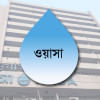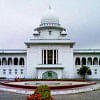No point in WASA water only being safe at source

We may recall that a great deal has been reported in the media in the recent past on the conspicuous presence of hazardous germs and bacteria in Dhaka Wasa water. The frequency of reporting increased as hundreds of diarrhoea patients began to visit the city's hospitals including the icddr,b on a daily basis only a couple of months ago. Breaches in Dhaka Wasa's supply system was considered to be the main reason behind the outbreak. Consequently, pressure from all quarters mounted on Wasa to take immediate steps to improve the quality of its water before supplying it to the citizens.
However, a recent research done jointly by Dhaka Wasa and icddr,b on the water supplied by Wasa has found it to be safe at the source. That is certainly welcome news. However, the two organisations did not conduct any test on tap water or water collected from the pipes within the Wasa distribution network. Why? We are at a loss to understand what the point is of water being safe at source if the water that consumers are getting from their taps are contaminated? Isn't it Wasa's responsibility to ensure safe water to all those drinking it or using it for various purposes, and to answer for their consistent failure to do so?
By now, there have been widespread reports of cross-contamination of Wasa water by sewage in many areas of the capital due to leaks and breaches in the supply lines, or while replacing old, derelict pipes with new ones. We have noted with alarm how Dhaka Wasa has consistently denied their part in the recent cholera outbreak, and we can't help but think that the latest report will simply enable them to continue their policy of denial. Instead of making misleading claims, Wasa needs to tell us what it has done since the cholera outbreak in March to address the derelict and alarming conditions of its supply lines.
The study shows that sludge and untreated sewage running through the drains contain and transmit coronavirus. If sewage lines are contaminating the water supply, where is the guarantee that the virus—and other untreated bacteria—are not making their way to our glass of water?
Interestingly, WaterAid and the Power and Participation Research Centre (PPRC) revealed in a separate seminar that about 41 percent of the people across Bangladesh don't have access to safe water. It is of urgent importance that we address the disconnect between what our policymakers claim and what we citizens experience. Unfortunately, we are yet to see any political goodwill to identify, much less address, the mismanagement, inefficiencies and corruption plaguing the sector.

 For all latest news, follow The Daily Star's Google News channel.
For all latest news, follow The Daily Star's Google News channel. 








Comments